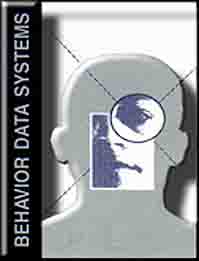
The SAI is comprised of 225-items and is designed for identifying sexual deviance, paraphilias in adults (male/female) accused or convicted of sex offenses. The items comprise 13 scales: 1) Test Item Truthfulness Scale; 2) Sex Item Truthfulness; 3) Sexual Adjustment Scale; 4) Child Molest; 5) Sexual Assault; 6) Exhibitionism; 7) Violence Scale; 8) Alcohol Scale; 9) Drug Scale and 10) Stress Management Scale; 11) Antisocial Scale; 12) Distress Scale; 13) Impulsiveness The SAI also contains an incest classification; it contains 3 questions and uses an admission, non-admission format. The purpose of the Incest Classification is to identify individuals who may have been involved in incestuous behavior (sexual relations with a close family member) and to assist program staff in identifying events that may inform treatment planning and rehabilitation efforts. 4 risk classifications, along with clinical judgment are used to inform treatment recommendations Test administration requires 25-30 minutes and can be completed individually or in groups; tests are administered as paper/pencil or using a computer
 Sexual Adjustment Inventory (SAI) Scientific Findings.
Sexual Adjustment Inventory (SAI) Scientific Findings. Degiorgio. L. & Lindeman, H. (2013). Comparing Female Sex Offender Characteristics Using the Sexual Adjustment Inventory. Journal of Community Corrections, 7-8, 21-23.
Degiorgio. L. & Lindeman, H. (2013). Comparing Female Sex Offender Characteristics Using the Sexual Adjustment Inventory. Journal of Community Corrections, 7-8, 21-23.  Degiorgio. L. & Lindeman, H. (2012). Sex offender assessment using the Sexual Adjustment Inventory. Journal of Community Corrections, 22 (1), 9-13.
Degiorgio. L. & Lindeman, H. (2012). Sex offender assessment using the Sexual Adjustment Inventory. Journal of Community Corrections, 22 (1), 9-13.  Lindeman, H. (2011). Sexual Adjustment Inventory. In B.K. Schwartz (Ed., 2nd ed.). Handbook of Sex Offender Treatment (pp.1-36). Kingston, NJ: Civic Research Institute.
Lindeman, H. (2011). Sexual Adjustment Inventory. In B.K. Schwartz (Ed., 2nd ed.). Handbook of Sex Offender Treatment (pp.1-36). Kingston, NJ: Civic Research Institute.  Lindeman, H. (2005). Sexual Adjustment Inventory. In B.K. Schwartz (Ed.). Handbook of Sex Offender Treatment (pp.1-36). Kingston, NJ: Civic Research Institute.
Lindeman, H. (2005). Sexual Adjustment Inventory. In B.K. Schwartz (Ed.). Handbook of Sex Offender Treatment (pp.1-36). Kingston, NJ: Civic Research Institute.  Davingnon, D. (2003). Assessment Driven Treatment. Corrections Forum, 30-32.
Davingnon, D. (2003). Assessment Driven Treatment. Corrections Forum, 30-32. Davignon, D. (2002). Sexual Adjustment Inventory: Sex offender assessment. Internal report commissioned by Behavior Data Systems.
Davignon, D. (2002). Sexual Adjustment Inventory: Sex offender assessment. Internal report commissioned by Behavior Data Systems.
